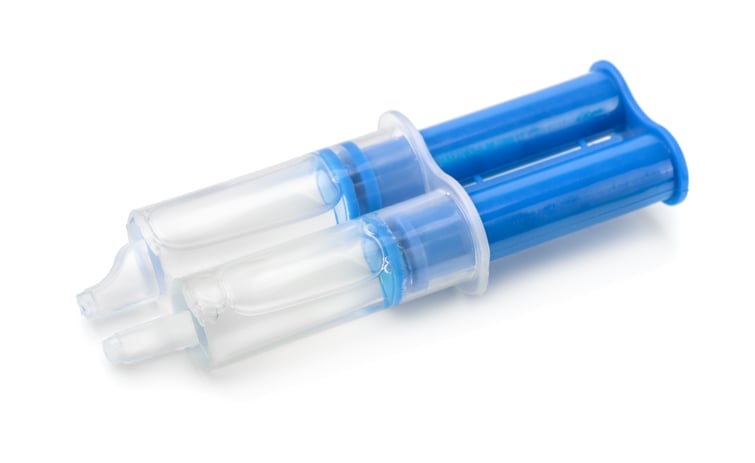 Adhesives are one of those essential products that tend to be overlooked. They’re barely visible and hardly noticed ... until they fail. The reality is this: If your supports aren’t properly bonded, it could lead to disjointed parts, damaged equipment, and wrecked process piping systems.
Adhesives are one of those essential products that tend to be overlooked. They’re barely visible and hardly noticed ... until they fail. The reality is this: If your supports aren’t properly bonded, it could lead to disjointed parts, damaged equipment, and wrecked process piping systems.
So what’s the big deal with epoxy adhesives, and how do you know what type will hold up in your system? We’ve laid out the ins and outs of this sticky stuff to help you secure your pipe supports with confidence.
What Is an Epoxy Adhesive?
Sometimes epoxy adhesives are lumped in with other broader bonding products such as glue. However, below the surface, they’re much more complex than most adhesive types. Epoxy adhesives are sometimes called “structural adhesives” or “engineering adhesives.” These terms make their role clearer: They’re part of a class of high-performance adhesives meant for applications that call for powerful bonding—think aircraft, aerospace technology, automobiles, or heavy process piping systems.
In piping systems, epoxy adhesives need to hold up to chemical exposure and extreme temperatures. Beyond being relentlessly durable, epoxies tend to also require extra attention during the application process. In order to build a strong bond, they undergo a curing process in which resin mixes with a hardener. This causes a chemical reaction that boosts the durability and strength of this special adhesive.
The Uses of Epoxy Adhesives
When it comes to process piping systems, epoxy adhesives play a critical role. These systems often need to join dissimilar materials together, like in the case of composite pipe shoes and metal piping. What’s more, adhesives need to hold structures together amid high pressure, heavy vibrations, and corrosive environments.
Fortunately, strong epoxy adhesives are up to the task. One area where epoxy adhesives add a special advantage is when you’re incorporating pipe supports, such as pipe shoes, wear pads, and ProTek Flat Plates. That’s because this combination makes it possible for you to install without the need for welding.
What’s the Advantage of Epoxy Adhesives?
By securing pipe shoes to pipes or adding wear pads to your system, you can insulate raw piping. Suddenly, you’ve protected your pipes from metal-on-metal contact without the high cost and intensity of specialized labor. Also, by cutting out welding, you’ll be avoiding vulnerable spots that need special heat treatments.
These supports can lengthen the life span of your systems, but they need to be firmly held together. Epoxy adhesives work well because they are durable and can hold up in extreme environments.
A reliable epoxy can also act as a sealant that fills in open gaps. This protects pipes and supports from corrosion caused by invading microbes, water, or other harmful elements.
Different Types of Epoxy Adhesives
There’s a multitude of specific epoxy adhesives, but in general, they can be split into two broad categories: one-component and two-component, or two-part, adhesives. Here’s the difference between the two categories:
One-Component Adhesives
Single-component epoxy adhesives usually come as a single paste. However, the name can be a bit deceiving. Although they come as only one physical substance, they still usually require external elements to kick off the curing process. That means they need heat treatment, moisture, or special lighting to create bonding.
Two-Component Adhesives
Two-part epoxy adhesives require you to mix two separate elements. When they’re applied properly, the result is a powerful bond. However, because two-part adhesives require mixing, there’s the potential for human error.
What’s the Solution?
If you want to get the benefits of a two-component adhesive without the concern of mixing the right ratio or getting it on your skin, use a static mixer and applicator. This tool loads onto a standard epoxy cartridge and delivers a two-part epoxy in a perfect mixing ratio, which can save the mess and guesswork that sometimes come with manually mixing two-component epoxies.
Need Help with an Upcoming Project?
The right epoxy adhesive can reinforce and strengthen your entire piping system. However, if you have questions on an upcoming project, there’s no reason to go it alone. We’re here to help. Go here and contact us with questions or request a quote for an upcoming project.





